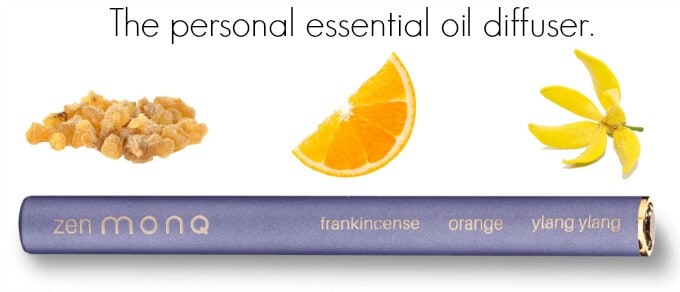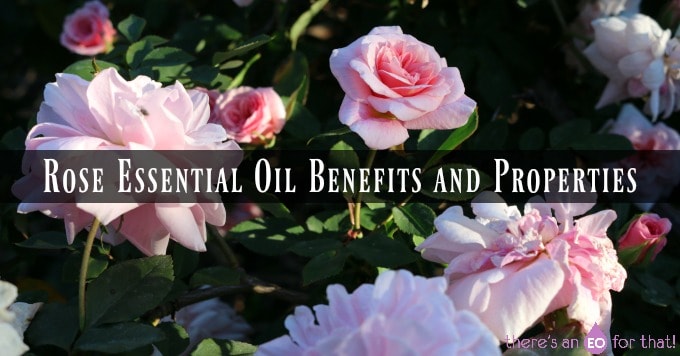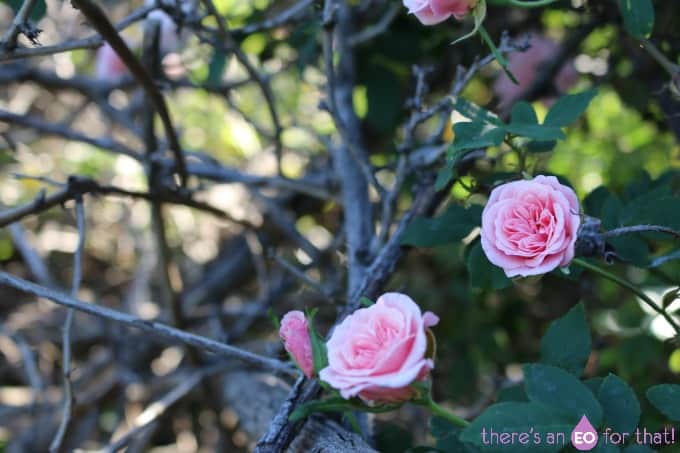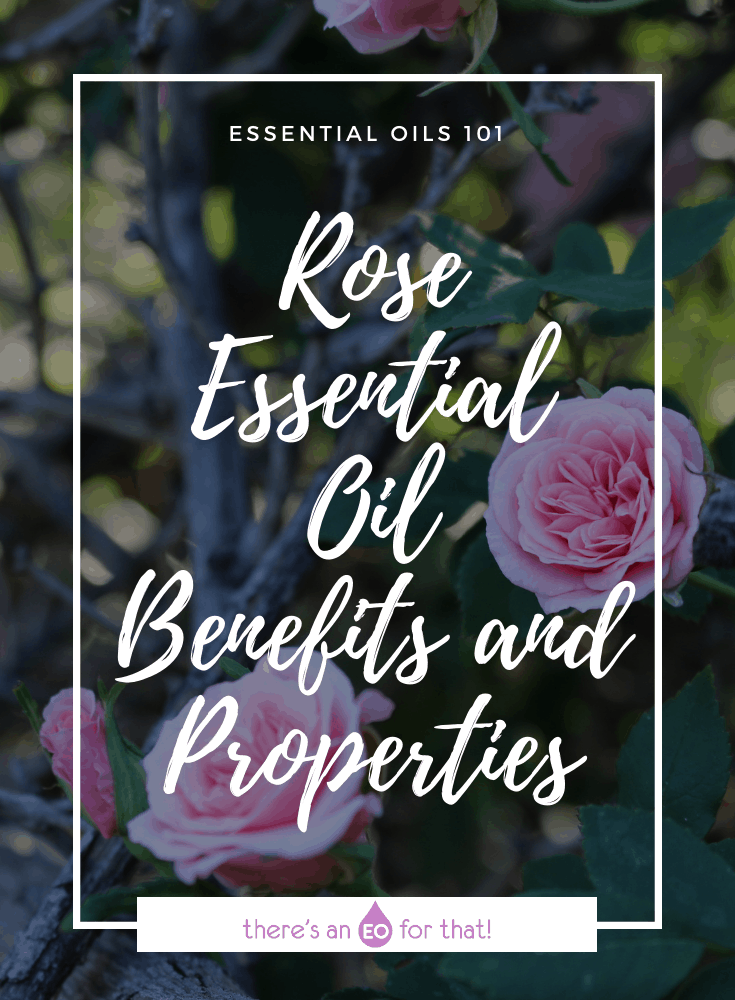Known for their exquisite and intoxicating aroma and visual beauty, roses have graced some of the fondest and happiest memories of our lives. There is a reason roses are the symbol of love, the opening of the heart, friendship, and intimacy.
It’s one of my most treasured oils and one that I covet over all other floral oils for its emotionally supportive properties and ability to instill happiness and contentment.
You simply cannot smell a rose without a smile!
The Benefits of Rose Essential Oil
For centuries, the rose has been a symbol of love, beauty, and passion. But did you know that the benefits of rose extend beyond its captivating appearance and sweet fragrance?
Rose essential oil, extracted from the petals of thousands of roses, is a versatile and powerful oil with various physical and emotional benefits. From reducing stress and anxiety to improving skin health and boosting immunity, the uses for rose essential oil are seemingly endless.
In this article, we’ll explore the many benefits of rose essential oil and how it can enhance your overall well-being mentally, emotionally, spiritually, and physically.
Botanical Name
There are two main species of roses used for essential oil production:
- Rosa damascena
- Rosa centifolia
Synonyms
Rosa damascena is commonly known as Bulgarian rose, Turkish rose, or rose otto.
Rosa centifolia is known as French rose, rose maroc, attar of rose, or rose absolute.
Family
Rosaceae
Origins
The rosa species is considered to be a native of Europe and Western Asia. It is believed that modern rose cultivars are derived from Rosa gallica; a dense, mostly thornless shrub found in the Mediterranean with light red flowers and yellow centers.
It is believed that the Rosa damascena originated in Persia where it then spread to Mesopotamia, Palestine, across Asia Minor, and finally to Greece and beyond.
The name Damascus rose dates back to the Crusades.
There are thousands of rose varieties; however, only three are typically used for making rose essential oils.
These include:
- Rosa damascena
- Rosa centifolia
- Rosa gallica
It is thought that the first rose essential oil was produced using Rosa damascena cultivars in Bulgaria as far back as the 15th century.
By the end of the 17th century, commercial rose growing and the production of rose essential oil became well established in the Bulgarian mountain district of Kazanlik.
Today, Bulgarian rose essential oil (and Bulgarian rose otto) is still considered the most prized and highest quality rose oil produced.
Other countries that produce large quantities of rose oil include:
- China
- France
- Italy
- Morocco
- Turkey
Extraction Method and Essential Oil Characteristics
There are three main oil extractions obtained from roses:
- Rose Essential oil – obtained through steam distillation
- Rose Concrete – Obtained through solvent extraction
- Rose Absolute – Further extraction of the concrete
To make all three of these extractions, thousands of pounds of rose petals are gathered by hand between the hours of 5 am and 10 am when the flowers have opened, and their oil concentration is highest.
The petals are then quickly transported to the distillery where they undergo a two-stage distillation process.
After distillation, even the hydrosol that is produced as a by-product of distillation is redistilled in order to get every drop of rose oil possible. This common practice is called cohobation.
Believe it or not, the yield of cohobation is actually several times higher than the first distillation of the rose petals. The resulting oil from both distillations is then blended together.
Fun fact: the phenyl ethyl alcohol content found in rose otto oil is derived almost exclusively from cohobation water distillation.
In order to make 1 kg of rose essential oil, you need to distill 4,000 kg of rose petals. 1/3 of the oil comes from the first distillation while the last 2/3 comes from redistilling the hydrosol.
Rosewater, one of my favorite skincare items, is the water left from distilling rose petals after the rose oil has been removed. It is believed that the first distillation of rose water was by Avicenna ( regarded as one of the most significant physicians, astronomers, thinkers, and writers of the Islamic Golden Age) in the 10th century.
Rose concrete is obtained through the use of a solvent such as hexane, which draws out the aromatic compounds as well as other soluble substances like wax and pigment. The solvent is then removed using vacuum processing and the remaining waxy substance is rose concrete.
Rose concrete contains all of the constituents as rose absolute, just in a semi-solid form, even at room temperature.
To obtain rose absolute, rose concrete is mixed with alcohol which dissolves the aromatic constituents, leaving behind the wax and pigment. The alcohol then is low-pressure evaporated which leaves behind the finished rose absolute.
Historical and Traditional Use
No other flower in history has been considered as sacred or as treasured as the rose. Exalted in literature and mythology, used as a heraldic emblem, and even identified with the Virgin Mary, the rose has been esteemed for its metaphorical heart-opening qualities and regal symbolism for centuries.
The word rosa comes from the Greek word rodon, meaning “red”. The story of Adonis states that the rose is red because Aphrodite wounded herself on one of its thorns and stained the flower red with her blood.
In the book Natural Senses, the scent of the rose is described at length; the climate and soil conditions which produce the finest rose oil, the best season for harvesting, the time of day and the best weather conditions for picking the flowers in order to preserve its scent, and even when a rose reaches the peak of its life cycle – all of which affect the final rose oil.
Roses were prized in Assyria, Babylon, China, Greece, and Rome for their healing properties.
The Romans had an obsession with roses and rosewater. During festivals and feasts, rose petals were strewn on tables and along streets and even worn in garlands around the neck to ward off inebriation. They were a sign of mirth, pleasure, and merriment.
In English medicine, the rose was used extensively for a variety of ills, especially inflammation. Nicholas Culpepper used rose ointment to soothe headaches and comfort the heart. Fresh rose petals and peppermint were crushed and used as a poultice for quieting over-heated spirits.
Today, rose essential oil and rosewater are used most often in skin-care preparations, perfumes, and as a flavoring for cuisine.
Other Possible Uses
The healing properties of rose have been used in medicine throughout the ages and still plays an important role in medicine today.
Rose is used for digestive and menstrual complaints, headaches and nervous tension, liver congestion, poor circulation, fever, eye infections, and various skin conditions.
Other uses include:
- Asthma
- Chronic bronchitis
- Frigidity
- Gingivitis
- Hemorrhaging
- Herpes simplex
- Impotence
- Infections
- Scarring
- Sexual debilities
- Skin diseases
- Sprains
- Thrush
- Ulcers
- Wounds
- Wrinkles
Chemical Components
Rose essential oil is one of the most complex containing over 300 chemical compounds, most of which are unidentified.
What is listed below accounts for about 86% of what rose oil is composed of. The remaining 14% represents over 300 different compounds.
The Chemical Composition of Bulgarian Rose Essential Oil
- Ethanol – 1.43%
- Pentanal – 0.07%
- 3-hexenal – 0.26%
- α-pinene – 0.73%
- camphene and heptanal – 0.14%
- β-pinene – 0.03%
- myrcene and hexanol – 0.5%
- heptanol – 0.02%
- hexyl acetate – 0.01%
- methyl heptanone – 0.04%
- octanol – 0.07%
- linalool – 2.18%
- cis-rose oxide and nonanal – 0.43%
- trans-rose oxide – 0.17%
- nonanol – 0.09%
- phenylethyl alcohol, decanol and terpinen-4-ol – 1.45%
- citronellol – 33.40%
- nerol – 5.90%
- geraniol and neral – 18.47%
- geranial and carvone – 0.72%
- citronellyl acetate – 0.53%
- neryl acetate – 0.06%
- cinnamaldehyde and C15 paraffin – 0.21%
- geranyl acetate – 1.60%
- eugenol and trans β-damascenone – 1.20%
- methyl eugenol and C16 paraffin – 2.37%
- octanal – 0.05%
- benzaldehyde – 0.10%
Therapeutic Action
Remedies containing rose are known to be cooling and soothing in nature. It is interesting to note that the application of roses in ancient medicine mirrors how roses are used today.
Rose essential oil is:
- Antidepressant
- Anti-inflammatory
- Antiseptic
- Anti-spasmodic
- Antiviral (kills viruses)
- Aphrodisiac
- Astringent
- Bactericidal (kills bacteria)
- Choleretic (increases bile flow)
- Cicatrisant (heals through the formation of scar tissue)
- Depurative (purifying and detoxifying)
- Emmenagogue (stimulates menstrual flow)
- Hemostatic (stops bleeding)
- Laxative
- Sedative – great for meditation and prayer
- Stomachic
- Tonic (heart, liver, stomach, and uterus)
Pharmacology and Clinical Studies
Rose oil has been shown to help reduce high blood pressure and arrhythmia of the heart as well as act as a protective against gastrointestinal ulceration.
The combination of Melissa essential oil and rose essential oil has been confirmed as an effective remedy for Herpes zoster and Herpes simplex.
Rose oil has also been found to have a calming effect on animals.
Esoteric Uses/Action
Astrological
Venus
Ayurvedic
Pitta
Body Type
Mesomorph
Chakra
2, 4, 6, 7 (balances all, especially the heart chakra)
Character
Yin; Cold and dry 2nd degree
Crystals
Ruby (chakra-2), Rose quartz, emerald (chakra-4), kunzite, pink calcite, watermelon tourmaline (chakra-7)
Element
Water, air, light, ether
Number
6
Energetics
Yin deficiency (kidney 6, Spleen 6), Excess yang (liver 2, heart 3)
Rose is classified as a cooling and moistening oil that helps clear away excess heat and inflammation. It alleviates depression and anxiety and can be beneficial for “hot” conditions involving the liver and gallbladder, where tension, irritability, headaches, and constipation are present.
Fragrant Influence and Characteristics
Rose oil is deep orange/red in color, semi-transparent, and slightly viscous.
Rose essential oil is stimulating and elevating to the mind, instilling a sense of wellbeing. The scent is intoxicating and aphrodisiac with a sweet, deep, and mellow “antique rose” aroma.
Note
Middle to base note
Fragrant Intensity
3
Scent
Floral, spicy, rich, deep, sensual, green, honey-like
Blend Classification
Personifier, enhancer, equalizer, and modifier
Frequency
The highest of all essential oils – approximately 320 MHz. rose oil enhances the frequency of every cell within the body, bringing balance and harmony.
Rose Essential Oil Spiritual Benefits
Rose essential oil is believed to be a powerful tool for promoting spiritual growth, emotional well-being, and a deeper connection with the divine.
Some of the spiritual benefits associated with rose essential oil include:
- Promotes love and compassion – Rose essential oil is often associated with the heart chakra, which is believed to be the center of love and compassion. Using rose essential oil can help promote feelings of love, empathy, and understanding.
- Enhances spiritual awareness – Rose essential oil is said to help enhance spiritual awareness and promote a deeper connection with the divine. This can help you feel more grounded and connected to your spiritual practice.
- Clears negative energy – Rose essential oil is believed to have a cleansing effect on the energy of a space or person. It is said to clear negative energy and promote positive, uplifting vibrations.
- Encourages self-love – Using rose essential oil can help you connect with your inner beauty and promote feelings of self-love and self-acceptance. This can be especially helpful for those struggling with low self-esteem or self-doubt.
- Promotes emotional healing – Rose essential oil is known for its ability to promote emotional healing and support mental health. It is said to help release pent-up emotions and promote feelings of peace and tranquility.
Blends Well With
- Amyris
- Balsam of Peru
- Bergamot
- Black pepper
- Cedarwood
- Cinnamon bark
- Clary Sage
- Coriander
- Frankincense
- Galbanum
- Rose Geranium
- Grapefruit
- Helichrysum
- Jasmine
- Laurel leaf
- Lavender
- Lemon
- Lime
- Litsea cubeba
- Mandarin
- Melissa
- Myrrh
- Neroli
- Palmarosa
- Patchouli
- Petitgrain
- Roman chamomile
- Sandalwood
- Sweet orange
- Tangerine
- Vanilla
- Vetiver
- Ylang ylang
- Yuzu
Indications for Rose Essential Oil
Rose oil has some of the most diverse applications and therapeutic properties of all essential oils and be used for physical, mental, emotional, and spiritual wellbeing.
Nervous System
Rose essential oil is known to be a gentle yet potent antidepressant that is sedative for the nerves. It is soothing to the heart not only emotionally during times of romantic turmoil or grief, but also for palpitations, irritability, and insomnia.
Simply smelling rose can help release anger, despair, and frustration by opening the heart and offering supportive comfort during times of sorrow and psychological pain. The scent of rose instills empathy, love, and feelings of friendship.
Reproductive System
Traditionally, rose has been used to astonishing effect on the female reproductive system as a uterine tonic, menstrual regulator, and sexual organ purifier. It helps regulate fertility and balance an irregular cycle.
Skin Care
Rose essential oil is one of the best essential oils to use for skincare, especially in anti-aging formulas. It is anti-inflammatory, hydrating, and softening to the skin and is well suited for dry, sensitive, and mature skin types.
Rose oil is also slightly astringent and tonic in nature which is good for controlling redness and irritation.
Personality Profile
Passionate, spiritual, deep, and hypnotic. Epitomizes the female spirit and personifies perfection.
Mode of Administration and Application
Topical – bath, compress, massage, ointment, skincare.
Inhalation – nasal or Himalayan inhaler, diffuser.
Safety
Rose absolute and rose otto essential oil is non-toxic, non-sensitizing, and non-irritating.
Maximum Dilution
Rose absolute – 2.5%
Rose otto – 0.6%
Is it Kid-Safe?
Rose absolute – yes
Rose otto – no
Frequently Asked Questions About Rose Essential Oil
What does Rose essential oil help with?
Rose essential oil has the most notable benefits regarding:
- Relieving stress and anxiety – Rose essential oil has a calming effect on the mind and body, making it a great choice for reducing stress and anxiety.
- Improving mood – The pleasant aroma of rose essential oil can help uplift your mood and promote feelings of happiness and well-being.
- Promoting relaxation – Rose essential oil is known for its ability to promote relaxation and reduce feelings of tension and nervousness.
- Enhancing skin health – Rose essential oil is often used in skin care products due to its ability to hydrate, nourish, and soothe the skin. It can also help reduce the appearance of fine lines and wrinkles.
Does Rose essential oil raise your vibration?
It is believed by many that rose essential oil can raise your vibration, the energetic frequency of your body, and the energy around you.
Here are some reasons why rose essential oil are thought to raise your vibration:
- Heart chakra activation – Rose essential oil is often associated with the heart chakra, which is the center of love and compassion. When the heart chakra is balanced and activated, it can help raise your vibration.
- Positive energy – The pleasant scent of rose essential oil promotes positive, uplifting energy that can help raise your vibration and improve your mood.
- Emotional healing – Rose essential oil is known for its ability to promote emotional healing and support mental health. When you feel emotionally balanced and healthy, your vibration will naturally rise.
- Spiritual connection – Rose essential oil is said to help enhance spiritual awareness and promote a deeper connection with the divine. This can help you feel more grounded and connected to the higher energies around you.
What is the most spiritual essential oil?
Many essential oils are commonly associated with spiritual practices and may be considered more spiritual by some individuals.
Some of the most spiritual essential oils include:
- Frankincense – Frankincense essential oil has been used in spiritual and religious ceremonies for thousands of years. It is believed to have grounding and centering properties that can help enhance spiritual awareness and connection.
- Sandalwood – Sandalwood essential oil is often used in meditation and spiritual practices, as it is believed to help quiet the mind and promote relaxation and focus. It is also associated with the root chakra, which is the center of grounding and stability.
- Rose – Rose essential oil is often associated with the heart chakra and the energy of love and compassion. It is believed to promote emotional healing and enhance spiritual connection.
- Lavender – Lavender essential oil is known for its calming and relaxing properties. It is often used in spiritual practices to help reduce stress and anxiety and promote a sense of inner peace.
- Sage – Sage essential oil is associated with purification and cleansing and is often used in spiritual practices to help clear negative energy and promote positive energy flow.
A “spiritual essential oil” will vary depending on personal preference, spiritual beliefs, and intended use.
What is the vibrational frequency of rose essential oil?
Rose essential oil is believed to have a frequency of approximately 320 MHz.
You may also enjoy reading:
Lemongrass Essential Oil – Benefits, Properties, and Uses!
The Benefits and Properties of Bay Laurel Essential Oil
The Benefits and Properties of Cardamom Essential Oil
Sugared Roses DIY Lip Scrub Recipe
DIY Smith’s Rosebud Salve
References
Rose (symbolism)
Avicenna
Therapeutic efficacy of rose oil: A comprehensive review of clinical evidence
Pharmacological Effects of Rosa Damascena
Relaxing effect of rose oil on humans.
Rose Oil
Reference Guide for Essential Oils
Essential Oils Integrative Medical Guide: Building Immunity, Increasing Longevity, and Enhancing Mental Performance With Therapeutic-Grade Essential Oils
The Complete Book of Essential Oils and Aromatherapy, Revised and Expanded: Over 800 Natural, Nontoxic, and Fragrant Recipes to Create Health, Beauty, and Safe Home and Work Environments
 This post contains affiliate links. We are a participant in the Amazon Services LLC Associates Program, an affiliate advertising program designed to provide a means for us to earn fees by linking to Amazon.com and affiliated sites. Please read my full disclosure and disclaimer.
This post contains affiliate links. We are a participant in the Amazon Services LLC Associates Program, an affiliate advertising program designed to provide a means for us to earn fees by linking to Amazon.com and affiliated sites. Please read my full disclosure and disclaimer. 



Leave a Reply